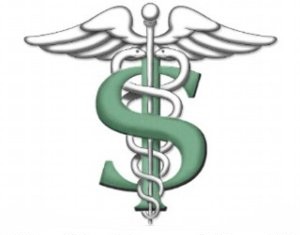 On January 30th, Urban Institute issued a report that forecasts the impact of health care reform on the uninsured population in New York State.
On January 30th, Urban Institute issued a report that forecasts the impact of health care reform on the uninsured population in New York State.
Currently 14% of New York’s population does not have health coverage. While this is lower than the national average of 16%, New York is one of the states with the highest number of people who lack coverage.
Employer-Sponsored Coverage – Roughly half of state residents receives insurance through their employer. However, employer-sponsored coverage is heavily skewed towards larger companies. About 96% of firms with 50 or more employees offer health coverage to their employees. In contrast, less than 45% of firms with 50 or fewer employees offer health coverage. As a result a large proportion of the uninsured are working and unable to buy coverage on their own.
Individual Coverage – Purchasing insurance independently is very costly. The price of a standard HMO policy for a family ranges from $38,000 to $85,000 a year for a plan in New York City. The cost of living in NYC only adjusts pricing by about 30%. In Albany, for example, the same policies for a family range from $30,000 to $66,000 a year. The cost of individual coverage is a multilayered complex issue. More information is available here. However, when individual coverage is so unobtainable for so many, it steers the working poor and the middle class into public programs. As a result, individual coverage only represents 4% of New York while public programs represent more than 33% of the population.
Public Programs – Roughly one-third of the New York population receives coverage through either Medicare (12%) or Medicaid (22%). These programs provide health coverage to the poor, the elderly, the disabled, and the youth. New York’s Medicaid program costs are the highest in the nation at $52 billion a year averaging a 5.5% growth rate from 2007-2010. New York receives a 50/50% match from the Federal Government to run the program, however, since New Yorkers pays more in taxes than they receive in Federal services, the state ends up responsible for the balance.
Nationally, the average cost of a Medicaid enrollee was $5,527 in 2009. The cost of children averaged $2,305 while the cost of the disabled averaged $15,840. In comparison, New York spent $8,960 per Medicaid enrollee (62% higher) which equated to an average of $2,505 per child (9% higher) and $29,881 per person with a disability (88% higher). These staggering statistics have led to a February 5th report from the U.S. House of Representatives’ Committee on Oversight and Government Reform requesting an independent audit of New York’s Medicaid program. The committee believes the program wastes billions of dollars each year because of the lack of accountability.
Uninsured – The uninsured represents 14% of New York’s population equaling roughly 2.6 million people. When factoring in the undocumented in the state, the number can increase by an extra 1 million – 1.5 million people. Health care reform does not allow coverage for the undocumented however Governor Cuomo’s 2013-14 budget proposal provides a means for undocumented New Yorkers to receive coverage through new regulations over HMO health companies licensed in the state.
Health Coverage Status – New York
|
Population |
||
| Insurance Source |
# |
% |
| Employer |
9,298,300 |
48% |
| Individual |
776,600 |
4% |
| Medicaid |
4,149,500 |
22% |
| Medicare |
2,302,100 |
12% |
| Other Public |
70,600 |
0% |
| Uninsured |
2,620,500 |
14% |
| Total |
19,217,600 |
100% |
Source: statehealthfacts.org
Urban Institute Findings
Reform passed to specifically lower the number of uninsured while helping those with insurance to maintain coverage. The Urban Institute’s report outlines what will happen to New Yorkers post reform, which officially start on January 1, 2014.
Of the 2.7 million uninsured New Yorkers
- 1.5 million New Yorkers remain uninsured (2/3rd)
- 50% are eligible for Medicaid but do not enroll
- 40% of them could receive financial support via the exchange but chose to not enroll
- 2/3rd are White or Hispanic
- 44% are single with no children
- 54% lack any college education.
- Roughly 1 million New Yorkers receive coverage post-health care reform (1/3rd)
- Medicaid grows by 11% adding half a million enrollees
- Individual insurance grows 40% adding 300k enrollees via health exchanges
- Employer-Sponsored insurance grows 3% adding 235k enrollees
| Pre-Reform | Post-Reform | Change | ||||
| Insurance Source | # | % | # | % | # | % |
| Employer | 9,298,300 | 48% | 9,534,145 | 50% | 235,845 | 3% |
| Individual | 776,600 | 4% | 1,091,060 | 6% | 314,460 | 40% |
| Medicaid | 4,149,500 | 22% | 4,594,985 | 24% | 445,485 | 11% |
| Medicare | 2,302,100 | 12% | 2,302,100 | 12% | 0 | 0% |
| Other Public | 70,600 | 0% | 70,600 | 0% | 0 | 0% |
| Uninsured | 2,620,500 | 14% | 1,624,710 | 8% | -995,790 | -38% |
| Total Population | 19,217,600 19,217,600 | N/A | ||||
Analysis based on Urban Institute study of UI Analysis of ACS NY Records using statehealthfact.org data as a baseline

